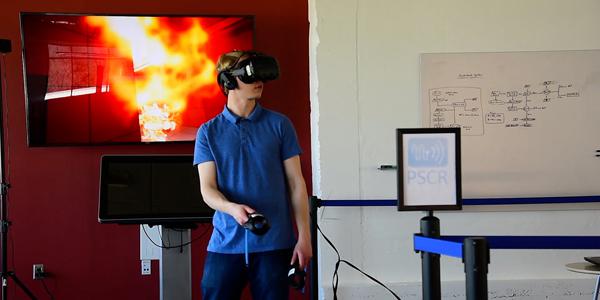NIST Tackles First Responder Virtual Training
Researchers at the National Institute of Standards and Technology (NIST) aim to make virtual reality simulations more of a reality for first responders, enabling firefighters, law enforcement officers and others to train for emergency operations and communications.
NIST staff members are developing virtual environments featuring scenarios such as firefighting in hotels. The goal is to spur industry to come up with user interfaces—visual indicators, sounds, voice commands—that are more effective, less expensive and capable of being quickly brought to market. Such interfaces could be embedded in firefighters’ masks or in smart glasses worn by emergency medical technicians, for example. A visual display might show the temperature, or audio might warn that oxygen is low in a backpack tank. The idea is to present helpful data in an intuitive and nonintrusive manner.
“There is currently no method to test and measure user interfaces for first responders,” NIST project leader Scott Ledgerwood says in a NIST announcement. “We want to enable development, testing and rapid prototyping of these interfaces in a safe, controlled and repeatable environment.”
Ledgerwood adds that as far as he knows no one has assessed virtual reality from a testing and development perspective. Testing interfaces in real emergencies could expose first responders to high risk, but virtual reality offers a safe venue.
The NIST project uses commercial headsets and controllers, but NIST develops the content. So far, the software programs feature firefighting scenarios in a hotel, a mountain home and an office environment. Users can choose their locations within the scenario and operate a controller to simulate a fire hose.
The intent in the near future is to develop methods and criteria for evaluating interfaces to ensure that the test bed provides valuable data to its customers. NIST also plans to create additional virtual scenarios for a broad range of first responders and a variety of headsets and graphic engines. The environment and scenarios may also be extended through NIST grants. Virtual reality is also a topic of some NIST prize challenges.
Soon, companies will be able to visit NIST to test their experimental interfaces or even replicate the entire test bed.





Comments